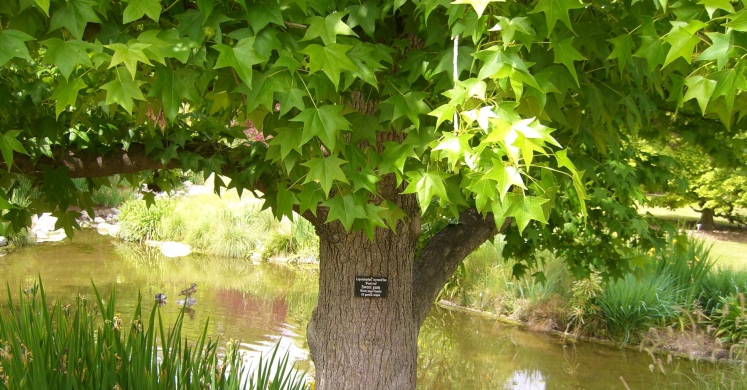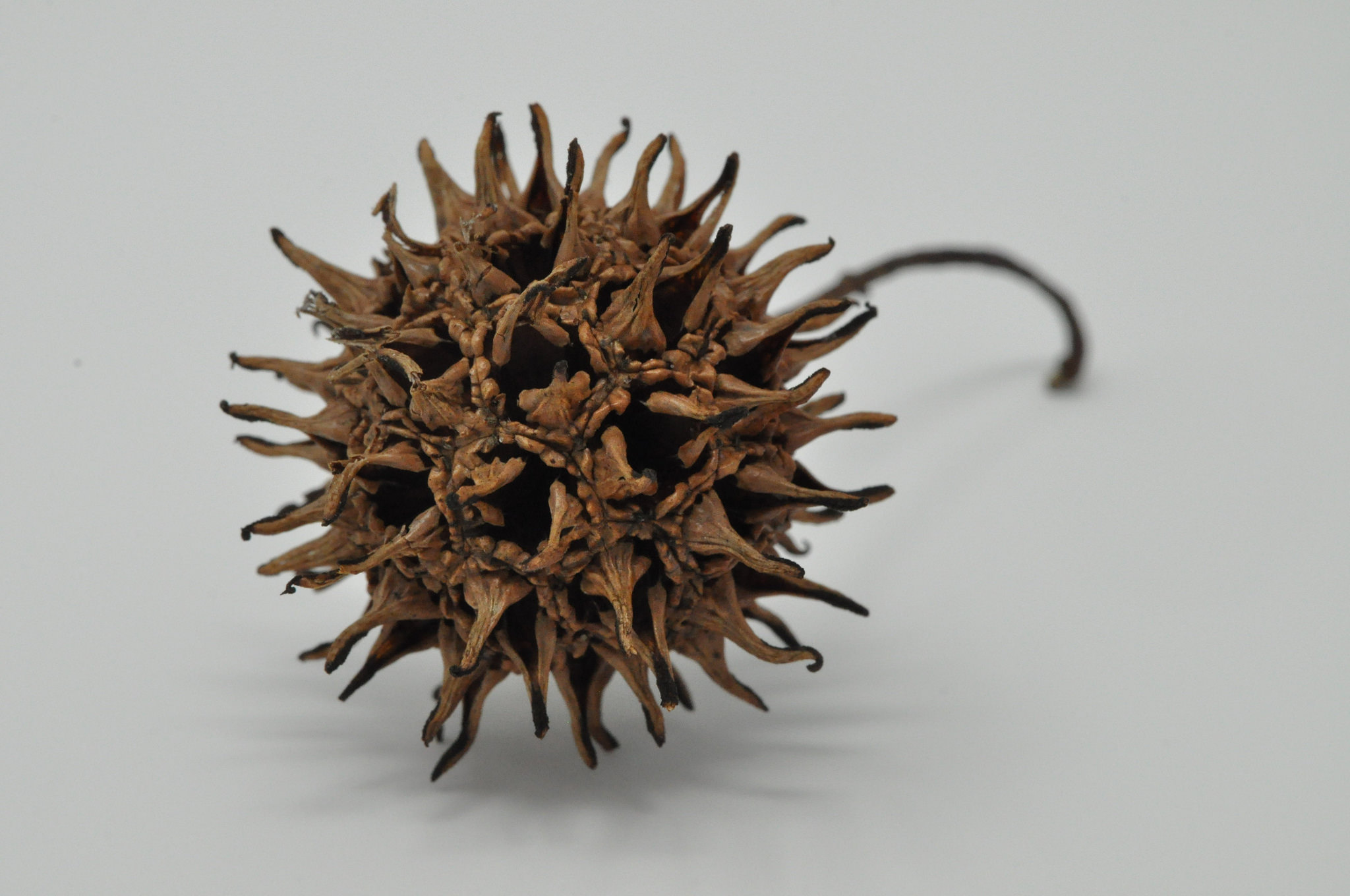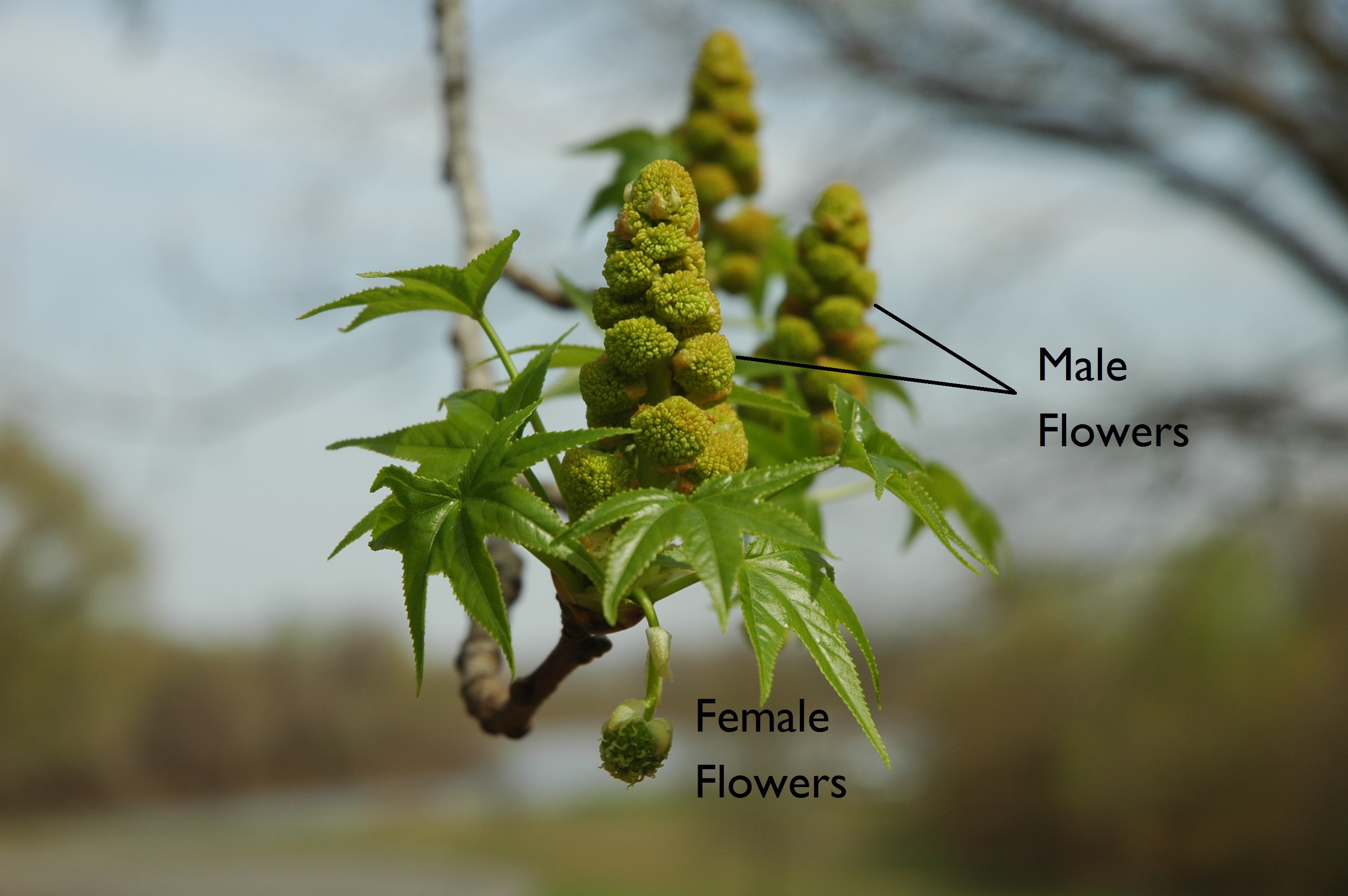Blog

#bioPGH Blog: Sweetgum Tree
 A resource of Biophilia: Pittsburgh, #bioPGH is a weekly blog and social media series that aims to encourage both children and adults to reconnect with nature and enjoy what each of our distinctive seasons has to offer.
A resource of Biophilia: Pittsburgh, #bioPGH is a weekly blog and social media series that aims to encourage both children and adults to reconnect with nature and enjoy what each of our distinctive seasons has to offer.
For those of us who remember Little Foot, Ducky, and the gang, the American sweetgum and its “tree stars” may evoke a little nostalgia, but helps make tree identification easier! Besides its star-shaped leaves, the sweetgum is a tree with many distinctive traits, including its bark-winged twigs and its spiky little fruits. Originally native to the southeastern US (though not during the Cretaceous Period, I'm afraid), early colonial settlers brought it northward to New England, Mid-Atlantic, and Midwestern states. Now common across Pennsylvania, our sweetgum trees will soon turn vibrant shades of yellow, red, and even purple as autumn approaches.

Sweetgum fruit
With their star-shaped leaves, sweetgum trees make a large, showy addition to both urban and wild landscapes. Upon maturity, they can reach 65-90 feet tall, and the tree’s crown (the aboveground portion of a tree) can span 40-50 feet in diameter. The tree’s bark is a grayish-brown with deep furrows and ridges, and intriguingly, on mature trees, the twigs and smaller branches have “wings” made of corky bark material.
Sweetgum flowers
Aside from the star-shaped leaves, one trait that makes sweetgum trees easily recognizable are its spiky, spherical fruits. These fruits are actually an aggregate fruit—like strawberries—and each fruit that we see hanging from the tree or scattered on the ground is really many seed-bearing capsules combined together into one…spiky ball. Each of the capsules in the fruit is derived from a different pistil on the female flower, similar to the black raspberries we talked about a few weeks ago, except that sweet gum trees have flowers that are either male or female. Pollen is moved from the male to female flowers by wind, and then the fruits can form from the pollinated female flowers. The trees typically won’t bear fruit until they are roughly fifteen years old, though.
Sweetgum has served as a traditional remedy for a number of different ailments, from sore throats to bacterial infections to the flu—it is in the witchhazel family, after all! Numerous American Indian tribes were known to have used sweetgum sap to moderate coughs and skin issues, and its Asian counterpart, the Chinese sweetgum tree, was similarly used as a treatment for coughs, skin conditions, and digestive issues. However, the sweetgum is also a good example of how the translation can be muddied between actual medical treatment and traditional remedies. A number of current natural remedies suggest making a tea or tincture with the seeds to help fight off a bout with the flu since sweetgum seeds contain a compound called shikimic acid, an important ingredient in the pharmaceutical Tamiflu. This makes sense superficially, but shikimic acid is actually only a precursor to the active ingredient in the influenza medication—it would need to be further processed before having the desired effect. It’s always best to see a licensed healthcare provider when really sick!
Whether you enjoy the sweetgum tree for its star leaves, beautiful fall colors, or medicinal properties, the sweetgum is another beloved resident of nature in Pennsylvania. The next time you’re out on a walk, take an extra moment to enjoy an old giant.
Connecting to the Outdoors Tip: Dried sweetgum fruits can make a delightful addition to your holiday decorating! If you spritz the fruits with non-toxic glue and shake them in a shoebox of biodegradable glitter, you have a sparkly addition fit for any upcoming holiday! The fruits can be the body of spiders at Halloween, they can wrap around a frame to make a Thanksgiving wreath, or with a dash of paint, they can be made into a snowman or a variety of ornaments.

Pinterest
Resources
Arbor Day Foundation: Sweetgum tree
Buckeye Yard and Garden Online: Sweetgum Trees
Yale Nature Walk –Sweetgum Tree
Missouri Botanical Garden – Sweetgum
University of Kentucky, Dept. of Horticulture—Sweetgum Propagation
ODNR Division of Forestry – Sweetgum
Lingbeck et al. 2015: Sweetgum: An ancient source of beneficial compounds with modern benefits
Photo credits: Wikimedia users Esun1 (cover image) CC-BY-3.0-US, Dan Murtha (header) CC-BY-2.0, Shane Vaughn (flowers) CC-BY-3.0, Flickr User Cygnus921 (fruit) CC-BY-2.0


